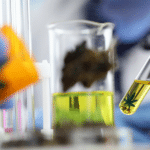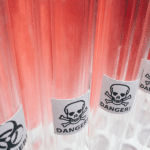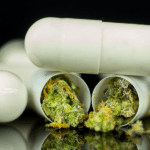Synthetic cannabinoids (sCBs) are a class of designer drugs meant to interact with the endocannabinoid system. British researchers recently published a report on the types of sCBs found among those who have died in the UK since 2014.
Synthetic cannabinoids (sCBs) are a class of designer drugs meant to interact with the endocannabinoid system. Going by names like spice and K2, they are used largely as a result of prohibition — many sCBs are technically legal and difficult to detect, so people will not be punished for use as they would be for smoking cannabis. Many synthetic cannabinoids are also used as research tools, allowing scientists to probe the role of the endocannabinoid system in disease when they cannot get legal access to THC or cannabis. People may be misled by the safety of cannabis, expecting sCBs to be equally safe. But unlike cannabis, the risks of these chemicals can be serious. There have been numerous instances of heart attacks, strokes, seizures, and psychotic episodes that end in death after smoking synthetic cannabinoids. British researchers recently published a report on the types of sCBs found among those who have died in the UK since 2014 (the cannabinoids were not necessarily the cause of death). Over a four-year period, their group found 113 bodies with detectable levels of 12 different synthetic cannabinoids. sCBs were found almost exclusively in men. Most of the sCBs were used for a 1-2 year period before being replaced by a new analog. This makes it very hard to prevent use or diagnose problems when people overdose and arrive in the emergency room. The common recent sCBs were 5F-ADB and AB-FUBINACA, according to this study which ended in early 2018. The current set of synthetic cannabinoids used in England is now likely different.
Read study: The changing pattern of synthetic cannabinoid use within England, April 2014 to March 2018
Adrian Devitt-Lee is a research scientist and longtime Project CBD contributor. © Copyright, Project CBD. May not be reprinted without permission.







